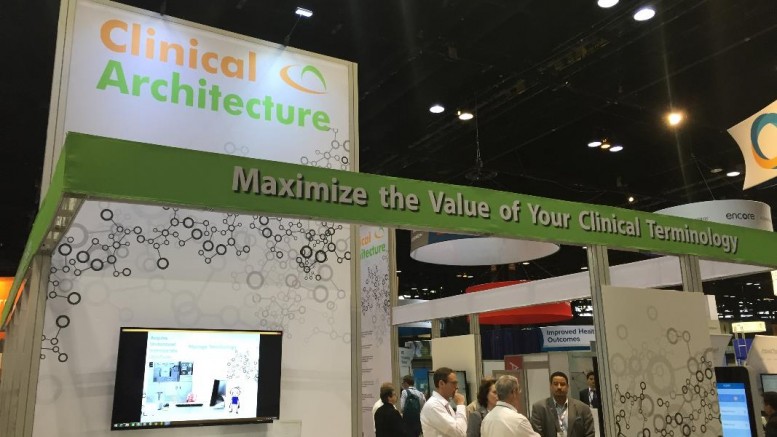Clinical Architecture has introduced new SIFT product suite to help healthcare organizations improve clinical care in an era of action
SIFT (Semantic Interpretation of Free Text) is an innovative approach to Natural Language Processing (NLP) that allows healthcare organizations to quickly convert the 80 percent of patient information that is stored in unstructured clinical text into actionable data. Using SIFT, organizations can optimize a variety of clinical processes such as medication reconciliation, clinical decision support, population health analytics, clinical coding, and clinical trials recruitment.
“The healthcare industry has focused on creating electronic systems for many years now. With these systems, organizations have documented and collected an almost unfathomable amount of information. Because most of this information is stored solely as free text, all you can do with it is read it. What’s needed is the ability to turn this information into the discrete actionable data that can be leveraged to build decision support rules, improve analytics, and effectively exchange clinical information,” said Andrew Frangleton, Clinical Architecture Managing Director UK.
SIFT for Meds, a specialized SIFT Service that leverages the SIFT platform, is a free-standing web API that detects drug information trapped in free text and translates it in to discrete RxNorm codes. This easy-to-implement, cloud-based solution turns free text from clinical documents – such as hospital discharge summaries or outpatient clinic visit notes – into coded data. By leveraging this coded data, users can quickly create an accurate and comprehensive medication profile for each patient, thereby avoiding inaccuracies which can lead to adverse drug events, a problem estimated to impact more than 7 million patients, contribute to 7000 deaths, and cost almost $21 billion in direct medical costs across all care settings in the United Statesannually.
“Getting a patient’s complete medication story into a codable, usable format is extremely labor intensive and takes considerable time – and often does not get completed as it should which can negatively impact patient care. With SIFT for Meds, you quickly and easily get the relevant data you need to properly reconcile medications at the point of care,” Frangleton said.
While SIFT for Meds focuses on a specific challenge aimed at medications, SIFT the platform, is a comprehensive solution that can be purposed for a variety of differing terminologies (i.e. diseases, lab results, patient demographics, symptoms, etc.). Used in conjunction with Clinical Architecture’s Symedical®, healthcare’s most sophisticated and powerful enterprise terminology management platform, SIFT scans unstructured text to identify concepts found in terminologies such as ICD-10, SNOMED CT, LOINC or other terminology standards.
A powerful retrospective tool, SIFT can also support clinicians in real time by bringing suggested codes to the forefront as the physician enters free text, eliminating the need for retrospective coding.
SIFT successfully performs such tasks because it reaches far beyond typical Natural Language Processing (NLP) solutions by:
- Focusing on the clinical – not semantic — structure of language:
SIFT derives meaning from unstructured clinical text, which typically does not adhere to traditional grammatical constructs. - Transforming free text into coded information:
SIFT can directly target any terminology within Symedical to prevent loss of meaning or semantic drift. - Enabling users to fine tune and improve results:
SIFT is not a “black box.” It can be configured to meet individual needs in specific situations. A healthcare organization might configure SIFT to help identify patients in their population that are at risk for heart failure by “SIFTing” patient medical records for ejection fraction values. With this coded information pulled to the forefront, the organization can take action, enrolling these patients in a population health program that manages their condition and satisfies requirements associated with clinical quality measures.
“All of these capabilities enhance our partner relationships with a variety of healthcare organizations – from ACOs to EHR vendors to Pharma companies and many others – to help them truly take advantage of their electronic systems and move toward realizing the improved care outcomes, enhanced patient experiences and reduced costs that are central to success under emerging value-based care models,” said Charlie Harp, Clinical Architecture Chief Executive Officer.
For more information about Clinical Architecture’s SIFT platform and the SIFT for Meds services, please visit www.ClinicalArchitecture.com or visit the Clinical Architecture booth (#721) at the HIMSS16 Conference and Exhibition in Las Vegas, NV.

